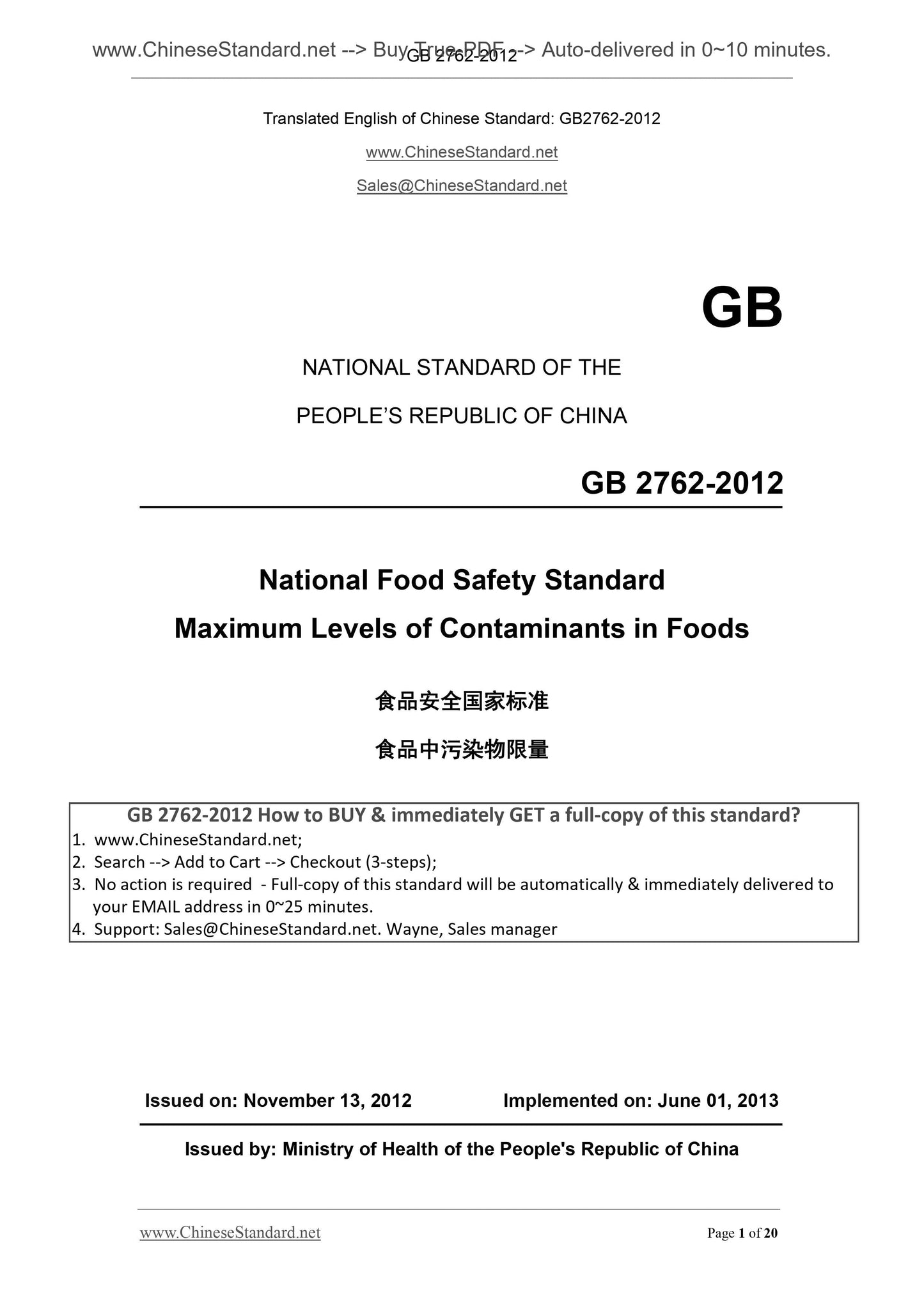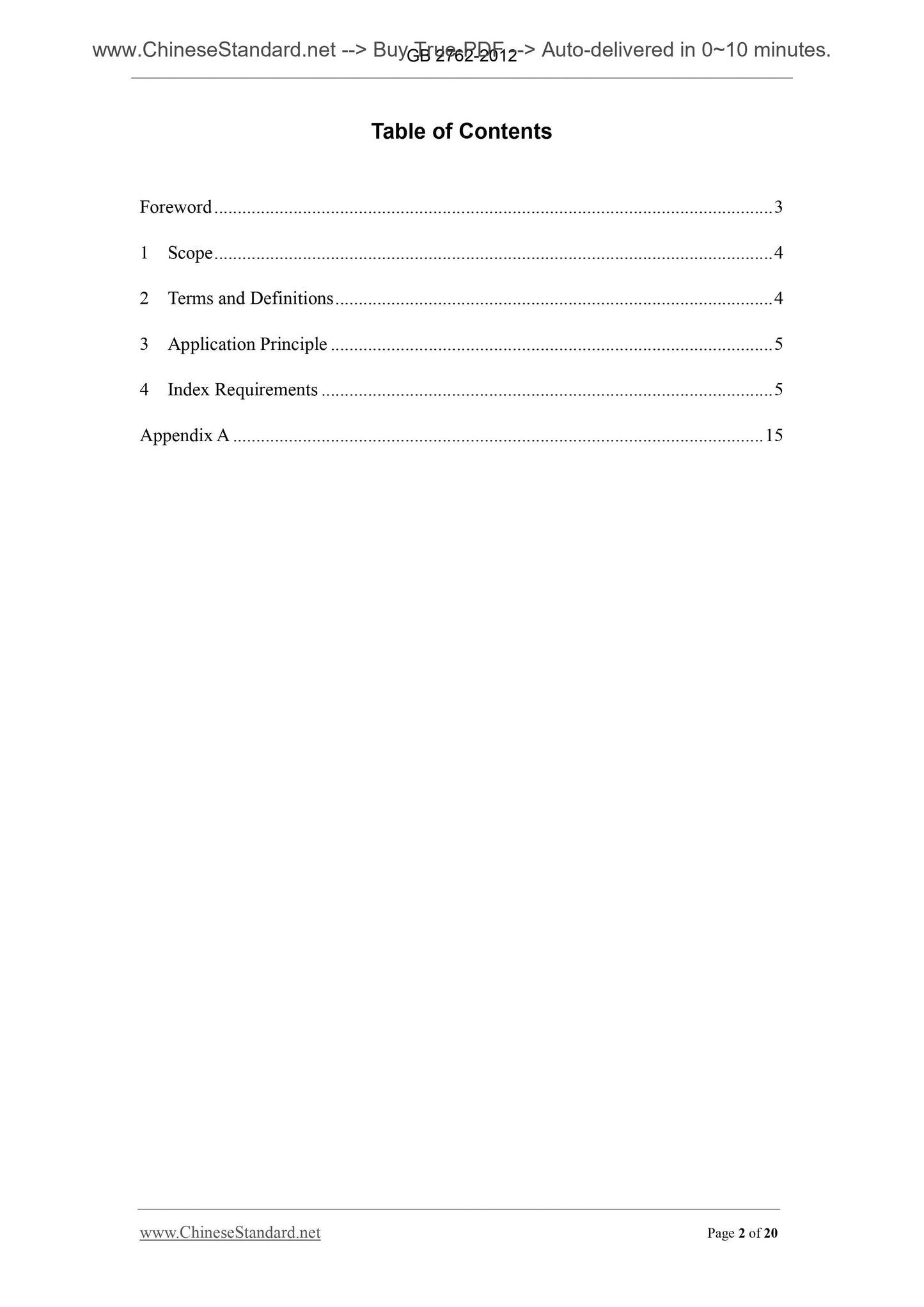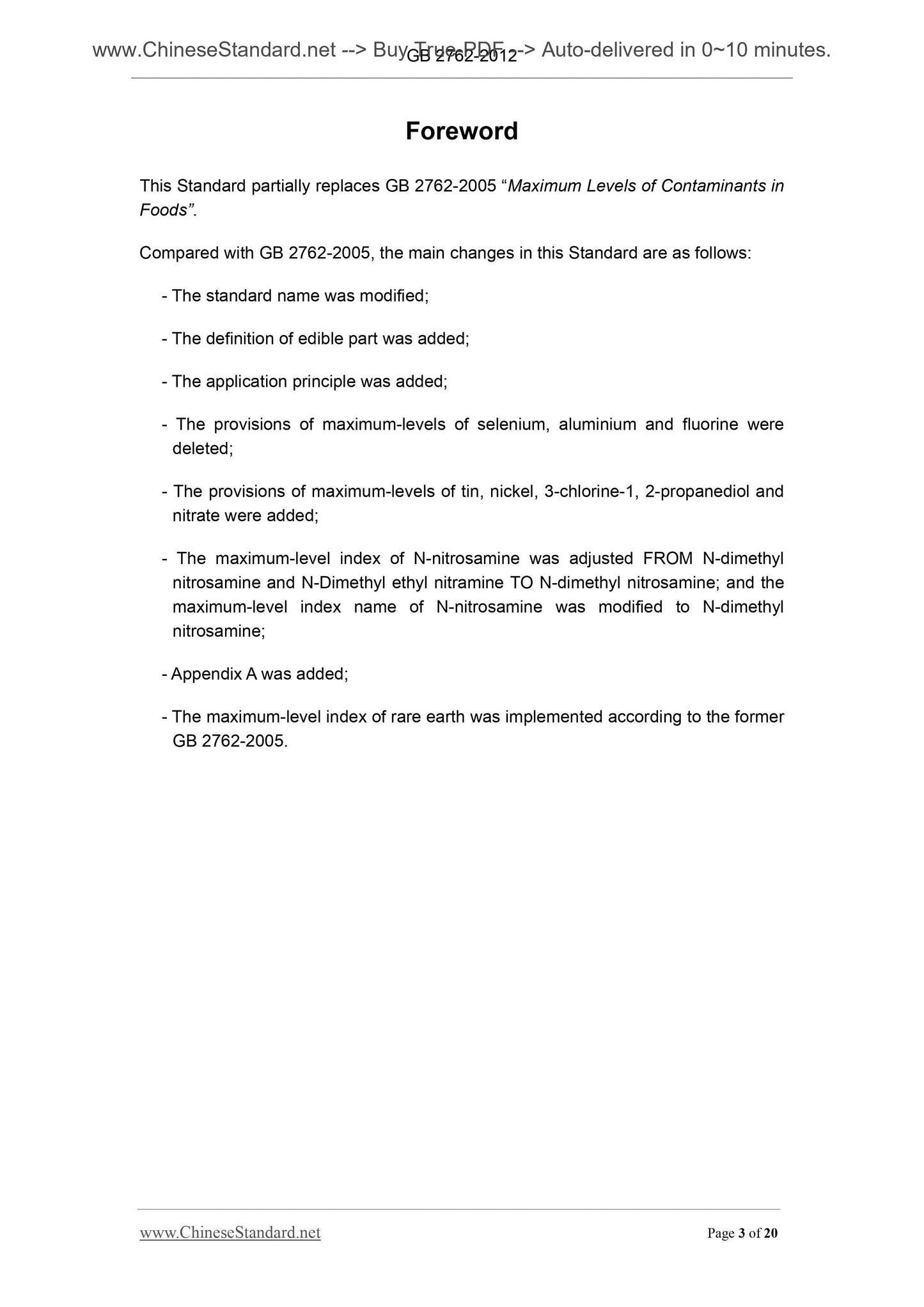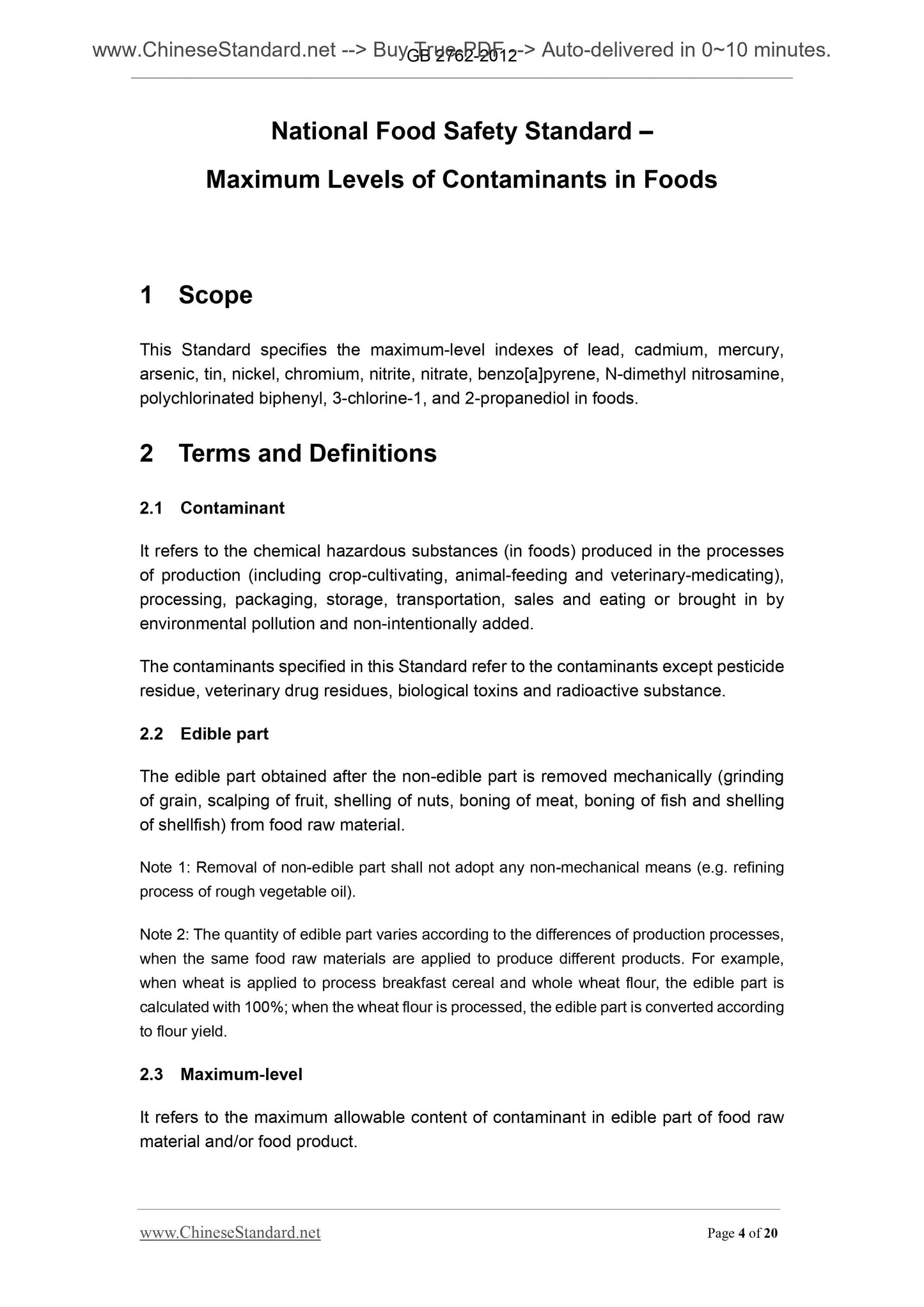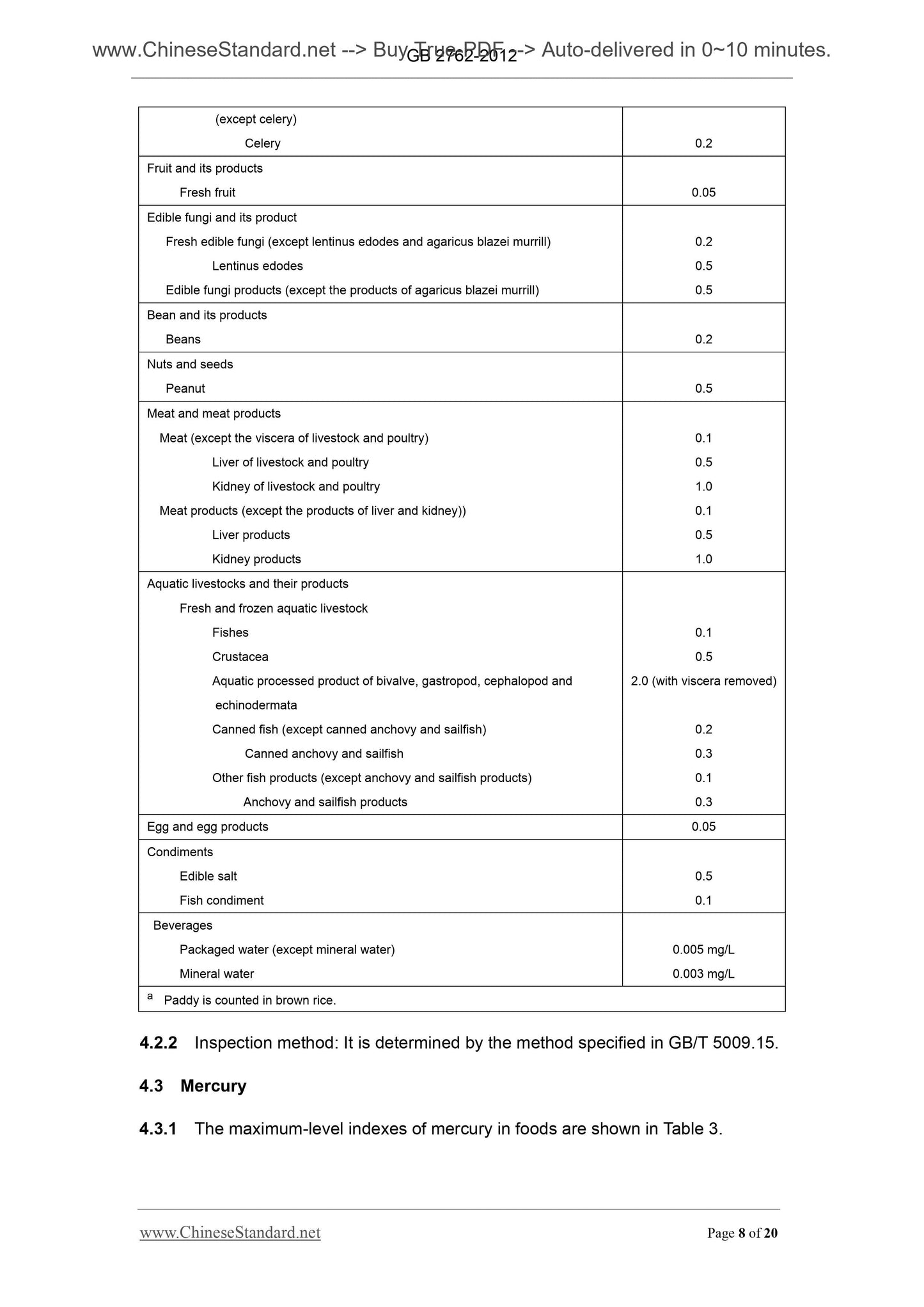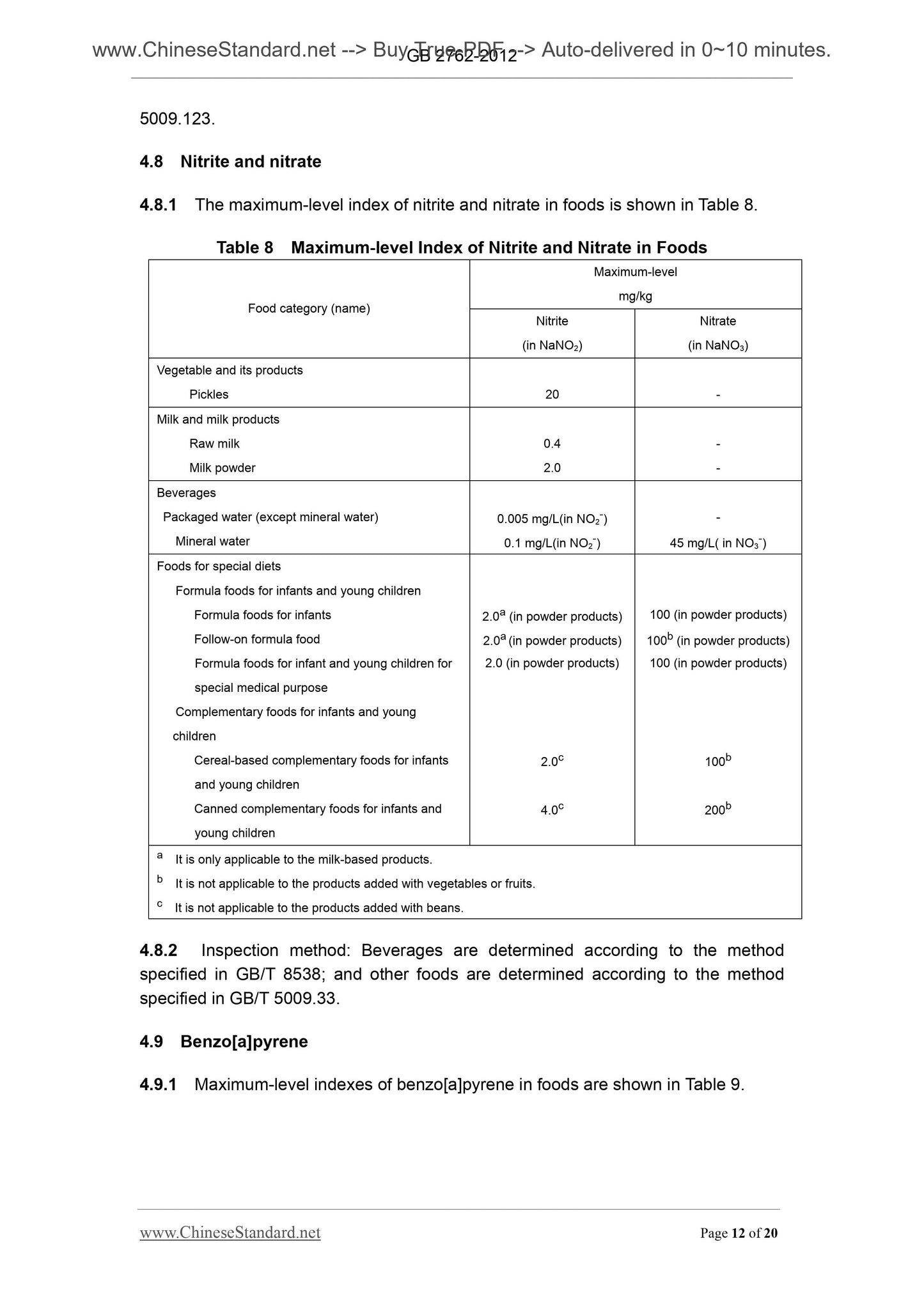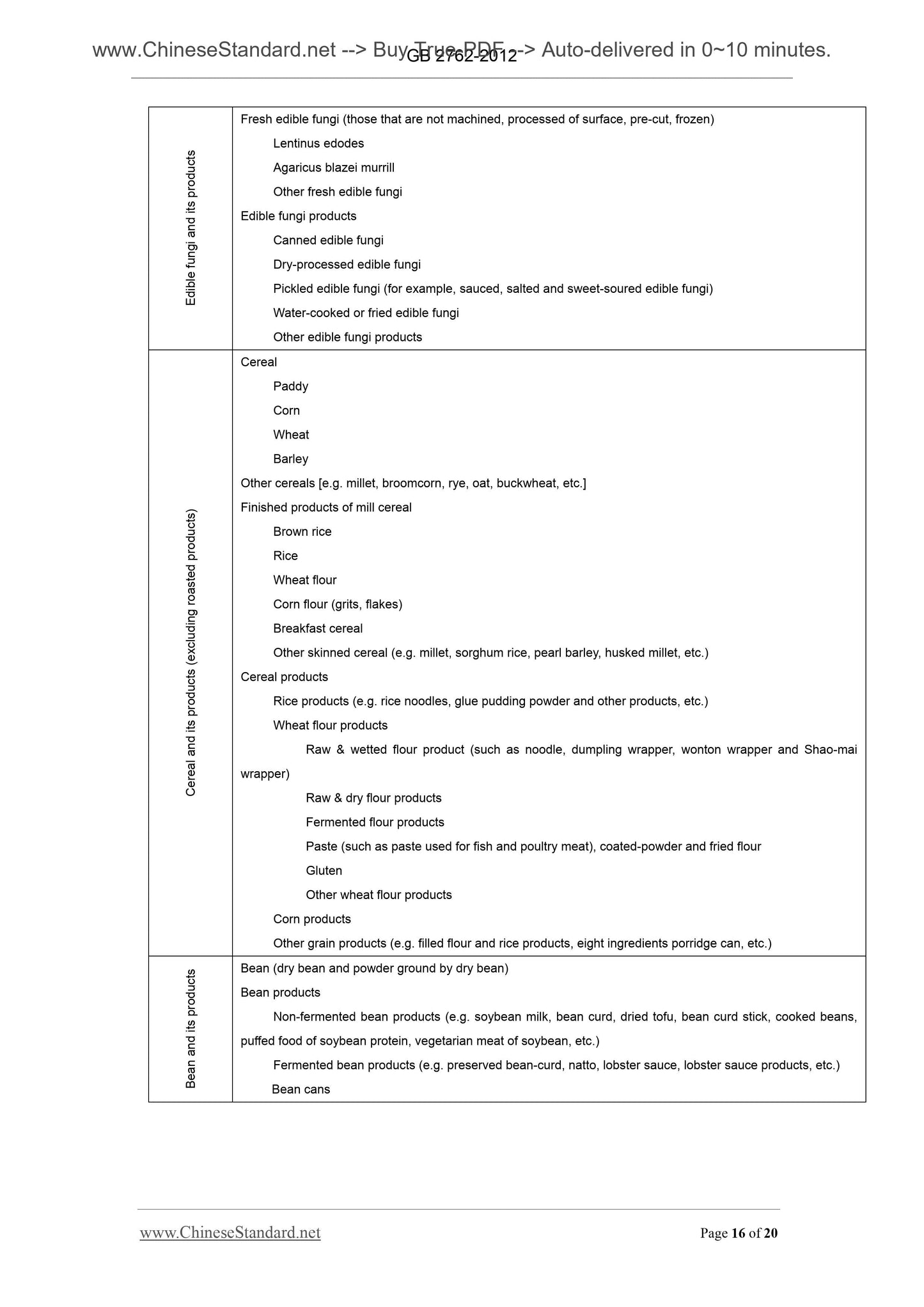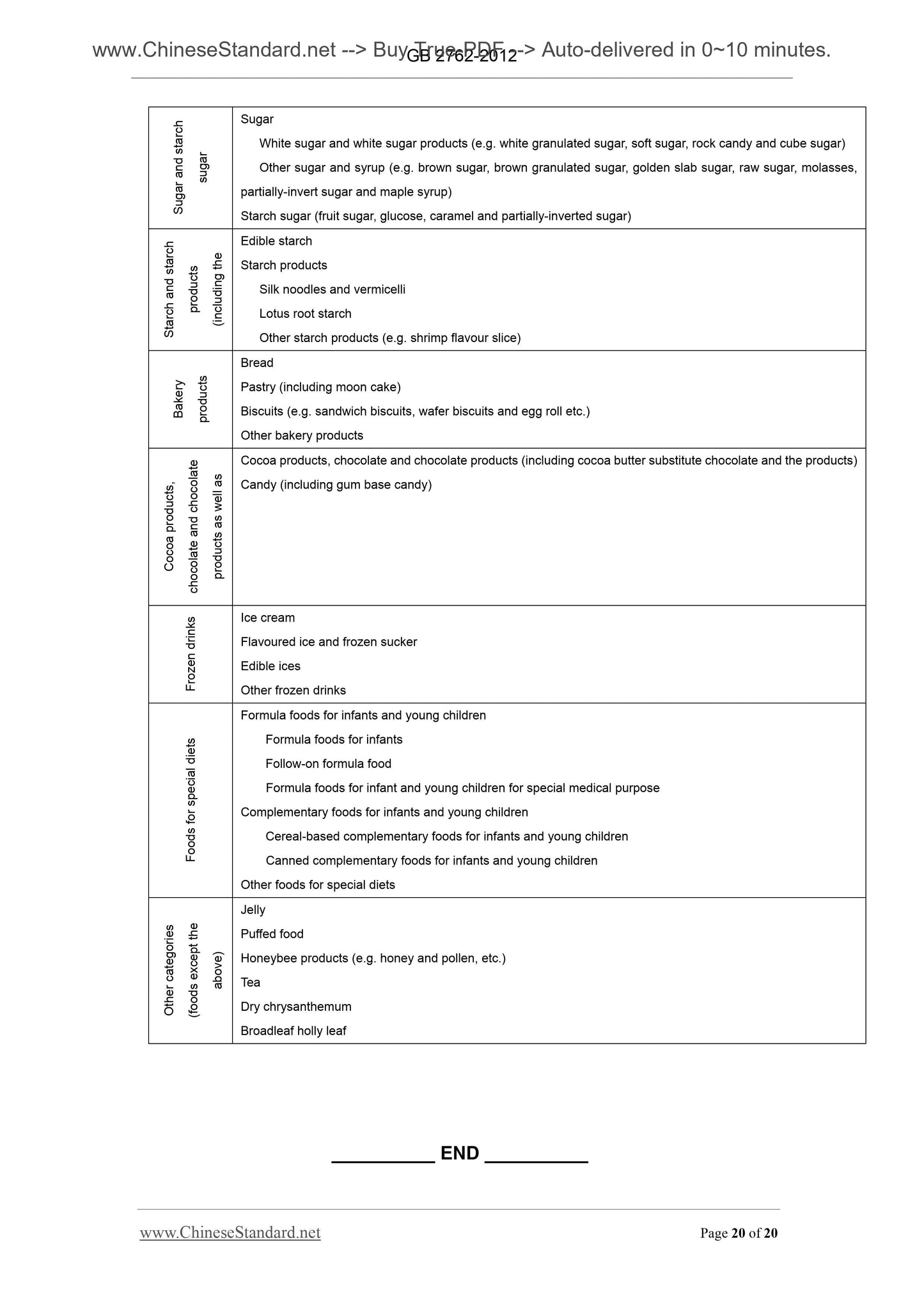1
/
of
8
PayPal, credit cards. Download editable-PDF & invoice in 1 second!
GB 2762-2012 English PDF
GB 2762-2012 English PDF
Regular price
$70.00
Regular price
Sale price
$70.00
Unit price
/
per
Shipping calculated at checkout.
Couldn't load pickup availability
GB 2762-2012: National food safety standards -- Contaminants in foods
Delivery: 9 seconds. Download (and Email) true-PDF + Invoice.Get Quotation: Click GB 2762-2012 (Self-service in 1-minute)
Newer / historical versions: GB 2762-2012
Preview True-PDF
Scope
This Standard specifies the maximum-level indexes of lead, cadmium, mercury,arsenic, tin, nickel, chromium, nitrite, nitrate, benzo[a]pyrene, N-dimethyl nitrosamine,
polychlorinated biphenyl, 3-chlorine-1, and 2-propanediol in foods.
Basic Data
| Standard ID | GB 2762-2012 (GB2762-2012) |
| Description (Translated English) | National food safety standards -- Contaminants in foods |
| Sector / Industry | National Standard |
| Classification of Chinese Standard | C53 |
| Classification of International Standard | 67.040 |
| Word Count Estimation | 18,149 |
| Older Standard (superseded by this standard) | GB 2762-2005 ial |
| Regulation (derived from) | Ministry of Health Bulletin No. 21 of 2012 |
| Issuing agency(ies) | Ministry of Health of the People's Republic of China |
| Summary | This Chinese standard specifies the food of lead, cadmium, mercury, arsenic, tin, nickel, chromium, nitrite, nitrate, benzo [a] pyrene, N- dimethyl nitrosamine, PCBs 3 chloro -1, 2 propanediol in foods. |
Share
